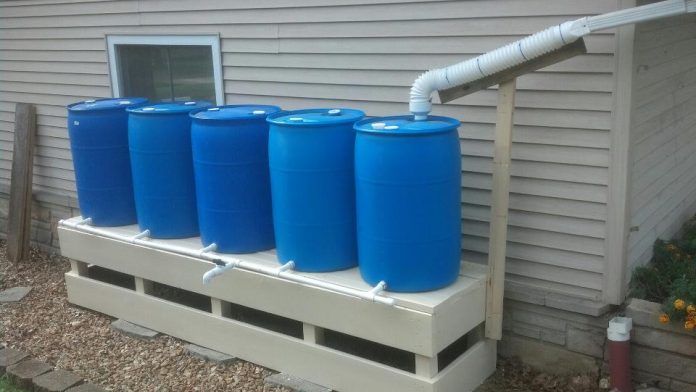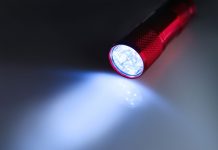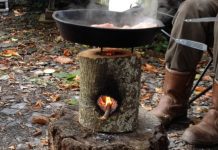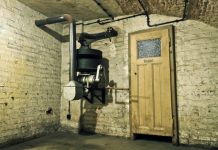Storage of emergency water is essential to any system of preparedness. Your ability to access and clean water sources will assure you have the water your family needs in a disaster. And it’s just not effective to store bottled water in your home.
While the standard is 1 gallon per person per day, you would actually need about 3 if you are factoring in things like cooking and cleaning, and probably much more if you have a garden that needs watering, which is a standard for the majority of preppers.
For a family of four, storing 3 gallons of water per person per day for a month will be 360 gallons per month! A 24 pack of 16 oz bottles of water will only amount to about 3 gallons of total water. Simple math dictate you’ll need 120 cases of water each month for a family of four! How does this all go?
So several preppers set up 55-gallon rain barrels to store rainwater on their downspouts. There are 55 gallons per clip, and can be used from drinking to washing to cooking for anything. Of course, nothing is perfect and when collecting rainwater there are certain drawbacks that you need to avoid.
Let’s look at 7 mistakes to avoid during rainwater harvesting.
Related: Did You Know Why Bottled Water Has An Expiration Date?
Construction
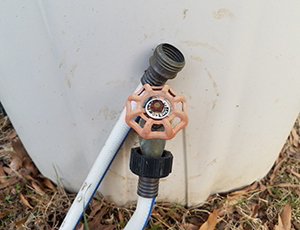

My earliest barrels of rain were simply sad. They still went leaky. After a rainstorm they would be full and then hours later the water level would be down below my badly installed spigot. If you have rain barrels or have them badly built it will defeat the intent.
To keep the spigots in place, you need a way to cut these barrels effectively, and a waterproof adhesive. When you cut a jagged hole without leaks it would be more difficult to screw the spigot in. Take your time and do it right the first time.
Overflow


Probably you are used to seeing a spigot at the bottom of the rain barrel. This is where you hook up your hose so you can easily access your stored water. You can also place another spigot on top of your rain barrel a few inches down. This will become on your overflow spigot.
Once mounted, the overflow spigot should be angled upwards to allow a gradual release of water along this fill line. You don’t want a bunch of water to spill over the edge of your rain barrel and settle about the foundation of your home.
The overflow helps your barrel to remain full but does not expose the base too quickly to a massive overflow.
Related: What Is The Best Way To Store Water For SHTF?
Screening


The worst of all is mosquitoes. The best thing to do if you really want some bad mosquitoes is to build a 55 gallon mosquito larvae farm to terrorize you and your neighbors. These little blood suckers will pop out of the surface of your rain barrels without a fine screen, and they’ll be hungry.
The screen will also keep your water free from debris that could blow in or make it down the gutters during a storm. Screen is easy to work with, and cheap. Cut it just slightly larger than the rain barrel’s mouth and use a large rubber band to secure it.
I use a screen, and I also add a few bleach caps to my rainwater! These troublesome mosquito larvae will be captured.
Gutters


Not all mistakes happen at level with the rain barrel. Rainwater harvesting also includes your roof and the gutters. If your gutters are full of debris it could restrict your rain harvesting capability, it could cause your rain barrel screen to be damaged by sticks and other debris. Also, your water will filter through all kinds of leaves you may not want in your drinking water.
Gutter guards or consistent cleaning will ensure you have clean water and the rain harvesting system is fully operational.
Sanitization
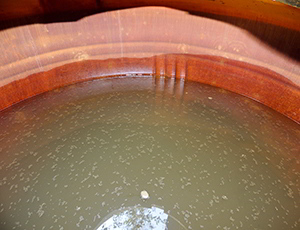

Wherever you stay, or wherever you collect the rainwater, be sure you are treating it. It should be filtered and sanitized to kill any bacteria or parasites by boiling, or using bleach. Never assume your drinking water is safe.
You run the risk of contracting waterborne diseases if you drink water directly from your rain barrel, which will require you to use much more water and resources to recover.
The market has some pressurized jerry cans, and they are a great tool for this. The jerry can fill up to about 4 gallons of water, and the filter included is good to around 10,000 gallons! Buy some unscented bleach, and store it for a number of uses, including water sanitation.
Related: How to Make an Antibacterial Sanitizer at Home
Origin


Not every barrel is fit for rainwater harvesting. Most barrels contain dangerous, flammable, or toxic materials until they end up poured out and treated as a possible barrel of rain. If your family drinks these bottles, you want to be sure that they have washed bottles of food grade. Nothing less to settle for.
If you have money to throw out on this rain barrel issue to collect rainwater, there are some great premade choices out there. You can buy decorative barrels, or you can buy barrels that have little grow areas on top of them. There is cool stuff out there.
Local Regulations


If you find yourself in this situation you have two options:
- Don’t harvest rainwater
- Establish a cover rainwater harvesting system.
Now, number 2 might sound like a complicated ordeal.Nonetheless, a cover rainwater collection system is not that hard to achieve. You will have more work to do than the average person and it will cost you more …
It is possible to bury rain barrels, and use a simple pump to fill buckets or containers. Rain barrels can be well hidden in a home’s backyard, with something as simple as a fig tree. These barrels will be covered by Foliage and only those seeking them would know they exist.
Be a good neighbor, too! Most of these infractions are reported by neighbors.
3rd option: Move away from the crazy place that thinks it owns the water.
Related: How To Calculate Your Water Needs For Survival
Water is important and it’s a scarce resource without which you’ll die in a short time. Our hyper convenient lifestyle means we overlook the infinite water supply that runs through our house. When an emergency cuts everything off, life in a panic is radically different.
A secret to surviving any SHTF scenario is from hygiene to hydration emergency water supply. The populace will be suffering from something like the ‘water shock’ as they know that nothing comes out of the tap.
I don’t recommend storing all your water indoors. Use rain barrels to harvest rainwater because, for most of us, its cheap and easy. Be sure you have filters and sanitation methods for water, include a little bottled and stored water for convenience. Avoid the 7 mistakes we mentioned, and you will be prepared for a water emergency.



